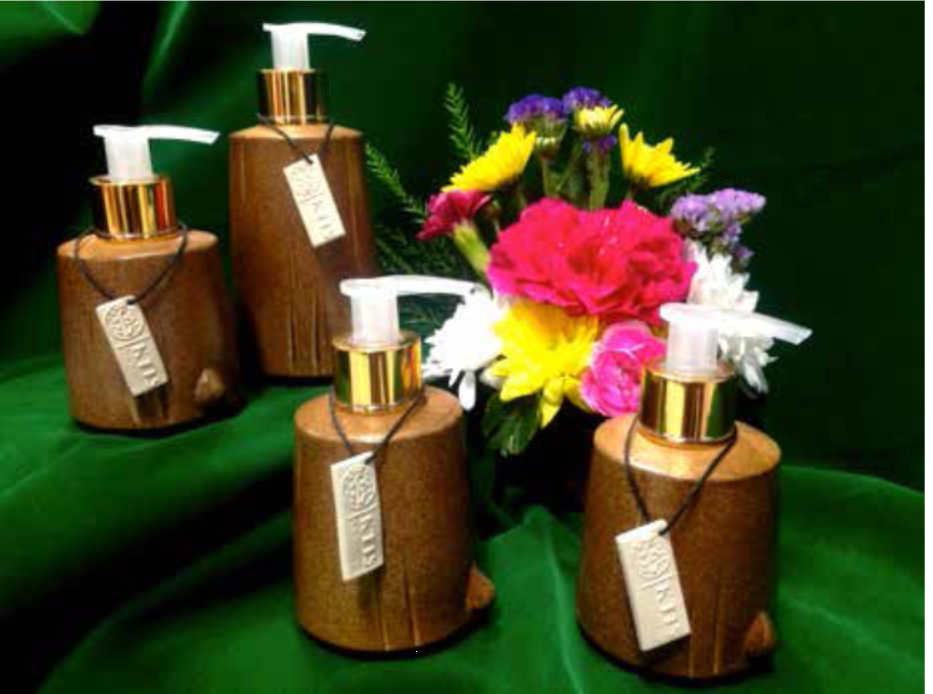Bagasse ash ceramic glaze
DOI:
https://doi.org/10.60136/bas.v5.2016.279Abstract
Sugar industry produces bagasse ash waste many tons per year. The only ash utilization so far is for soil improvement for sugar cane plantation. The utilization of bagasse ash from sugar manufacture to produce ceramic glaze is studied. The glaze consists of 3 major raw materials: bagasse ash, clay, and feldspar. Chemical analysis by X-ray fluorescence (XRF) indicates that bagasse ash contains 71% SiO2, 9% Al2O3 , and 8% CaO as major composition. Phase analysis by X-ray diffraction (XRD) shows quartz as dominant phase. Glaze formulae for 1250 °C firing temperature are determined using tri-axial blend method. In this study the appropriate amount of bagasse ash for grazing on decorative ware is between 35-65%, clay 15-50% and feldspar 10-70%. The addition of 10% Caco3 helps in reducing the firing temperature. The glaze colors vary from yellow to dark brown depends on the amount of added ash. If high amount of ash is added, the glaze color becomes dark brown. The bagasse ash glaze can be used on decorative ware but is not suitable for tableware because it does not pass the crazing resistance test using an autoclave.
References
ปรีดา พิมพ์ขาวขํา, เคลือบเซรามิก, กรุงเทพฯ : อักษร เจริญทัศน์, 2530.
ลดา พันธ์สุขุมธนา, เคลือบขี้เถ้า : เอกสารประกอบการฝึกอบรมวันที่ 27-28 มีนาคม 2547 ณ ศูนย์ศิลปาชีพ บ้านกุดนาขาม จ.สกลนคร. กรุงเทพฯ : กรมวิทยาศาสตร์บริการ, 2547.
สํานักงานคณะกรรมการอ้อยและน้ำตาลทราย. รายงานพื้นที่ปลูกอ้อย ปีการผลิต 2553-2554 [ออนไลน์]. (อ้างถึงวันที่ 23 สิงหาคม 2555]. เข้าถึงจาก: http://www.ocsb.go.th/upload/journal/fileupload/923-5062.pdf
CORDEIRO, G.C., et al. Influence of mechanical grind on the pozzolanic activity of residual sugarcane bagasse ash. Proceedings of the international conference on use of recycled materials in building and structure. Barcelona, 2004, pp. 342.
ROGERS, P. Ash Glazes, 2nd ed. London : A&C Black Publishing, 2003.
CORDEIRO, G.C., et al., Ultrafine grinding of sugar cane bagasse ash for application as pozzolanic admixture in concrete, Cement and Concrete Research, 2009, 39, 110-115.
รัฐพล สมนา และ ชัย จาตุรพิทักษ์กุล. การใช้เถ้าชานอ้อยบดละเอียดเพื่อปรับปรุงกําลังอัด การซึมผ่านน้ำ และความต้านทานคลอไรด์ของคอนกรีตที่ใช้มวลรวมหยาบจากการย่อยเศษคอนกรีตเก่า, วารสารวิจัยและพัฒนา มจธ., ต.ค.-ธ.ค. 2554, 34(4), 369-381.
ชัย จาตุรพิทักษ์กุล. การใช้เถ้าชานอ้อยเพื่อเป็นวัสดุปอซโซลานในงานคอนกรีต, วารสารคอนกรีต, ส.ค. 2555, (16), 1-11.
ศุภกา ปาลเปรม, เซลาดอน [ออนไลน์]. [อ้างถึงวันที่ 2 ตุลาคม 2555]. เข้าถึงจาก: http://designinnovathai.com/_file/files/Celadon.pdf
ภาณุเทพ สุวรรณรัตน์ และคณะ, การทดลองเคลือบขี้เถ้าจากอัตราส่วนผสมขี้เถ้าไม้มะม่วงหินฟันม้า และดินเหนียว ท้องนา เพื่อเคลือบผลิตภัณฑ์เครื่องปั้นดินเผาชนิดสโตน แวร์, วารสารวิชาการอุตสาหกรรมศึกษา, ม.ค.-มิ.ย. 2550, 1(1) , 45-52.
สนิท ปิ่นสกุล. การใช้ขี้เถ้าแกลบเป็นวัสดุแทนควอทซ์ในกระบวนการผลิตเซรามิกส์, วารสารวิจัยมหาวิทยาลัยราชภัฏพิบูลสงคราม, 2554, 7(14), 56-65.
ISSENBERG, M., Spraying wood ash glazes. Ceramic art daily [online]. [viewed 7 October 2012]. Available from: http://www.ceramicartdaily.net/booksales/Glazes_PreWoodAsh.pdf
วรรณา ต.แสงจันทร์ และ ลดา พันธ์สุขุมธนา, เคลือบซรามิก : เอกสารประกอบการอบรม [ออนไลน์]. (อ้างถึงวันที่ 3 พฤษภาคม 2555]. เข้าถึงจาก: http://lib3.dss.go.th/ fulltext/dss_manual/M008.pdf

Downloads
Published
How to Cite
Issue
Section
License
Copyright (c) 2022 Bulletin of Applied Sciences

This work is licensed under a Creative Commons Attribution-NonCommercial-NoDerivatives 4.0 International License.









